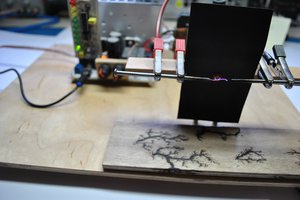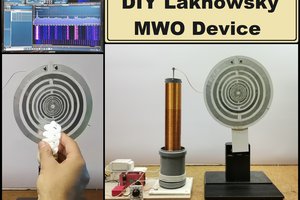Caveat Emptor
I am not a physicist. I have only dabbled in a field that is absolutely fascinating. The following descriptions of what and how rely heavily on Wikipedia and academic sources and are subject to my interpretations and understanding of the material.
What is quantum vacuum thrust?
Quantum Vacuum Thrust (QVT) uses quantum vacuum fluctuations of the zero-point field. Let’s take a moment to unpack that. A quantum vacuum fluctuation is “a temporary change in the amount of energy at a point in space”. This presumes two things: first, that there is energy in a vacuum, and second, that the energy level is not constant.
The first assumption relies on quantum mechanical models that have minimum ground states that are greater than 0. In some volume there exists an infinite number of points we could measure an energy level at. The points taken all together make up a field. The energy levels of the field are the zero-point (ground state) field mentioned above.
The second assumption, that the energy levels at discrete points fluctuate, relies on Heisenberg’s uncertainty principle. The principle states that: given two complementary physical quantities, the precision with which we can measure both is limited. For example, momentum and position are complementary and are given as
For the zero-point field, the physical quantities that are complementary are time and energy, given as
This uncertainty in time and energy theoretically allows for particle pairs to appear literally from vacuum as the energy state of the field changes. Note that these particle pairs are The appearance of particles for short periods of time is what we call a quantum vacuum fluctuation.
The theorized method of operation for a QVT is to transfer momentum to the particles that appear using electric and magnetic fields at right angles to each other.
What is a Serrano Field Effect thruster?
From Hector Serrano’s patent, “Thrust is provided to a vehicle using a self-contained device for producing the the thrust through a pre-selected shaping of an electric field.” The design is a series of capacitors with two kinds of dielectric between. The capacitors are ideally driven by a high-voltage AC signal.

The “preferred embodyment” is conductive plates [34], high-k dielectric [26], and low(er)-k dielectric [42]. [28] may be the same material as [42]. Serrano claims that this configuration forces the electric field to wrap around the high-k dielectric [26] and that this somehow (it isn’t clear) induces thrust.
Serrano’s claim is that the thrust phenomena appears during the charging phase of the capacitors. This is consistent with the idea of overlapping magnetic and electric fields being necessary, as the charge and discharge of the capacitors would induce a magnetic field.
While the patent is purposefully obtuse, there is some value in examining it. It has been attached to this project for your enjoyment.
Who else has done this?
Eagleworks
2011, evaluates Serrano Field Effect test article built by Gravitec Inc. in and out of Faraday cage and in vacuum. (p40 of the linked pdf, and 2013 Eagleworks newsletter attached to this project)

J.L. Naudin
2002, builds and evaluates Serrano Field Effect device. Note that Naudin also has instructions for building this apparatus.


 Albert Latham
Albert Latham


 mircemk
mircemk
 NathanStrachen
NathanStrachen